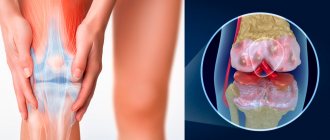Content:
- The essence of the disease
- Reasons for the formation of pathology
- Classification
- Alcoholic polyneuropathy, symptoms, diagnosis
- Alcoholic polyneuropathy, treatment
Chronic intoxication with alcoholic beverages leads to the development of many diseases. Often, people suffering from alcoholism develop alcoholic polyneuropathy (polyneuritis), a disease in which complaints appear that indicate damage to the structures of the peripheral nervous system. Its obvious signs are detected in 20-30% of alcoholics. Pathology occurs 5 times more often than manifestations of central nervous system disorders. Hidden (latent) forms of the disease are characteristic of almost all patients. But they can only be noticed when examined using special methods, in particular – electroneuromyography. Men suffer several times more often than women. You can find out more about what this problem is and how it manifests itself in the symptom description section.
Diagnosis and treatment of emergency conditions associated with alcohol abuse
Chronic alcohol intoxication leads to the development of a number of specific diseases of internal organs and the nervous system, united by the general concept of “somatic equivalents of alcoholism” and the term “alcoholic polyvisceropathy”.
As is known, alcoholic polyvisceropathy is characterized by a relative “benign” course and the potential reversibility of pathological changes if regular intake of alcoholic beverages is stopped. Otherwise, as the degeneration of organs and tissues specific to chronic alcohol intoxication worsens, alcoholic polyvisceropathy leads to multiple organ failure, which often becomes both the cause and background for the development of emergency conditions and death.
Emergency conditions and acute lesions of the digestive organs, as a rule, develop against the background of severe alcohol excess or due to sudden withdrawal of alcohol and the development of alcohol withdrawal syndrome.
Unfortunately, in practice the close cause-and-effect relationship between these events is often underestimated. This is to a certain extent facilitated by the fact that in the international classification of diseases (ICD-10) these diseases are included in various headings.
Let's list the ICD-10 sections related to alcoholic liver disease and emergency conditions due to alcohol abuse.
Alcoholic liver diseases: K70.0 - alcoholic fatty liver disease; K70.1 - alcoholic hepatitis; K70.2 - alcoholic fibrosis/sclerosis of the liver; K72.0 - acute and subacute liver failure; K71.1 - chronic liver failure; K76.6 - portal hypertension.
Alcoholic diseases of the nervous system: G31.2 - degeneration of the central nervous system caused by alcohol; G62.1 - alcoholic polyneuropathy.
Mental disorders: F10.0 - acute poisoning caused by alcohol consumption; F10.3 - withdrawal state caused by alcohol consumption; F10.04 - withdrawal state with delirium caused by alcohol consumption; F10.2 - chronic alcoholism (alcohol dependence).
The risk of death is highest in acute alcohol poisoning. Thus, more than 2 thousand cases of acute alcohol poisoning are recorded annually in Moscow. In 2002, it caused the death of more than 3 thousand residents of the Moscow region. In 2004, 22 thousand people died from acute alcohol poisoning in Russia.
Despite the fact that about 80% of all deaths from acute alcohol and drug poisoning develop outside the clinical setting, emergency conditions associated with alcohol abuse are quite rare in the practice of an outpatient healthcare provider. However, specialists from mobile teams and emergency hospitals (EMS) encounter this pathology almost every day. For example, the number of these patients exceeds 10% of the total number of patients daily in the intensive care units of emergency hospitals. In multidisciplinary emergency hospitals, diseases associated with alcohol abuse are the cause of 10-13% of deaths.
The pathogenetic mechanisms of acute alcohol poisoning are nonspecific and are similar to the mechanisms of development of any exogenous intoxication, including: disruption of the energy supply to the cells of vital organs and systems when overloaded with toxin (alcohol itself and acetaldehyde); introduction into the body of a large amount of “non-electrolytes” (intermediate products of alcohol metabolism); formation of “lethal synthesis” products of certain toxins (acetaldehyde); introduction into the body of a large amount or accumulation of “membranotoxins” (lactic acid, peroxides); direct potentiation of lipid peroxidation, development of deficiency of antioxidant systems.
The strategy for prehospital medical care for acute alcohol poisoning is also based on the well-known methodology for providing emergency care for exogenous intoxication and includes the following stages: identification of the leading pathological syndrome; diagnosis of the severity of the condition and the risk of death of the disease; identification of the etiological factor; differential diagnosis; determining the prognosis of the condition; determination of indications and scope of emergency therapy; determination of indications and choice of direction for emergency hospitalization.
However, from a tactical point of view, when providing prehospital care to a patient with acute alcohol poisoning, it is fundamentally important to remember that this emergency condition develops in the patient against the background of pre-existing, more or less pronounced multiple organ failure, which significantly affects both the severity of the patient’s condition and the prognosis of the disease. In this regard, the severity of damage to internal organs in acute alcohol poisoning is also largely determined by the premorbid background. In patients without clinically significant alcoholic liver disease, symptoms such as jaundice, as well as signs of chronic portal hypertension (hepatomegaly, splenomegaly, varicose veins of the anterior abdominal wall, edema, ascites, etc.) may be completely absent. As a rule, diagnosing acute ethanol poisoning does not cause significant difficulties. Nevertheless, when examining a patient at the prehospital stage, it is advisable to adhere to certain sequences and principles of emergency care for acute alcohol poisoning.
- Establish the fact of recent alcohol intake and determine its characteristics (date of last intake, binge drinking or one-time use, quantity and quality of alcohol consumed, total duration of regular alcohol intake). It is possible to adjust for the social status of the patient.
- Establish the fact of chronic alcohol intoxication and nutritional level.
- Determine the risk of developing withdrawal syndrome.
- As part of toxic visceropathy, determine: the state of consciousness and mental functions, identify gross neurological disorders; stage of alcoholic liver disease, degree of liver failure; identify damage to other target organs and the degree of their functional usefulness.
- Determine the prognosis of the condition and develop a plan for observation and pharmacotherapy.
Obviously, clarifying the patient’s “alcohol” history is aimed at determining the severity of the current acute alcohol poisoning, as well as the risk of developing alcohol withdrawal syndrome (on the 3-5th day after the last intake of alcohol).
The leading clinical syndrome in patients with acute alcohol poisoning is severe exogenous intoxication with predominant dysfunction of the central nervous system and depression of consciousness, development of hepatic-renal failure. The patient emits a distinct odor of alcohol. The condition is severe, consciousness is impaired from stupor to coma (10-0 points on the Glasgow scale). There is severe facial hyperemia, shortness of breath and shallow breathing, acidosis, tachycardia, and oliguria. Patients retain a normal oculocephalic reflex, the eyes look straight, the pupils are not constricted and react to light. At the onset of the disease, a rise in blood pressure and hyperthermia are possible. As the disease progresses, as the patient's condition worsens, a tendency toward the development of hypotension and anuria is determined.
To predict the outcome of acute poisoning, it is also fundamentally important not only to assess the severity of all manifestations of alcoholic visceropathy, but also to determine the degree of preservation of the patient’s personality and social adaptation. The worst prognosis for acute alcohol poisoning will be in patients with alcoholic liver disease and liver failure, convulsive syndrome, alcoholic encephalopathy, severe weight loss and the development of purulent-septic complications.
A reliable laboratory diagnostic marker of acute alcohol poisoning is persistent hypoglycemia. Prehospital blood glucose levels can be easily determined using a strip test or a portable glucometer. For glycemia <3.5 mmol/L, patients with acute ethanol poisoning should receive a single bolus of 40 ml of glucose 40%. It is important to remember that in patients with chronic alcohol intoxication, rapid administration of glucose can accelerate the development of Wernicke encephalopathy. To prevent the development of acute encephalopathy, immediately after the administration of glucose, it is necessary to administer a single intravenous bolus of 100 mg of thiamine. In general, the task of prehospital medical care for acute alcohol poisoning is to organize timely resuscitation and transport the patient to the intensive care unit of a toxicology hospital or emergency hospital. In this regard, prehospital pharmacotherapy is only symptomatic. Directed detoxification therapy with a large amount of isotonic crystalloid solutions in preclinical conditions and in the absence of the possibility of differential diagnosis of acute alcohol poisoning with other causes of impairment of consciousness in patients with chronic alcohol intoxication is inappropriate.
Alcohol-induced withdrawal symptoms
Studying the epidemiology of alcohol withdrawal states caused by alcohol consumption appears to be a much more difficult task. In practice, this section of ICD-10 is taken into account extremely rarely when preparing medical documentation, despite the fact that it is severe withdrawal syndrome that is the most common direct cause of decompensation of alcoholic visceropathy. In 2003, according to the Moscow City Center for Pathological Research, diseases from the spectrum of alcoholic polyvisceropathy were recognized as the cause of death in more than 7% of autopsies performed in hospitals in Moscow. Without a doubt, in the vast majority of these cases, the immediate cause of death was the development of severe withdrawal syndrome in patients with chronic alcohol intoxication. It should be noted that patients with mild to moderate withdrawal are usually treated on an outpatient basis or without the use of medical care or pharmacotherapy.
Withdrawal syndrome is most severe in people who have just suffered acute alcohol poisoning. However, even withdrawal syndrome not complicated by delirium always leads to exacerbation of alcoholic visceropathy. In this case, specific withdrawal symptoms: nausea, vomiting, headache, tremor, severe autonomic disorders, agitation, confusion, behavioral disturbances and hallucinations - may manifest against the background of acute damage or decompensation of the liver, pancreas, heart and blood vessels or the development of purulent -septic complications (most often pneumonia). According to various data, in 30-68% of patients as a result of acute ethanol poisoning against the background of withdrawal syndrome, acute alcoholic hepatitis or decompensation of liver cirrhosis occurs with the development of liver failure - the main cause of severe nausea and vomiting in patients with alcohol withdrawal syndrome. The purpose of this article is not to discuss methods for diagnosing and treating alcoholic liver disease at the prehospital stage. Nevertheless, it should be noted that preclinical diagnosis of alcoholic liver disease is a completely solvable problem, since it is based on questioning and examination of the patient, which allows us to identify most of the specific symptoms of hepatitis and cirrhosis of the liver.
Nausea and vomiting, complicating the course of withdrawal and exacerbation of alcoholic liver disease, are one of the most painful and potentially dangerous syndromes. However, in syndromes associated with alcohol abuse and impairment of consciousness, the main danger of vomiting is the development of potentially fatal emetic complications such as dehydration, hypokalemia, aspiration of vomit and Mallory-Weiss syndrome. To prevent vomiting in patients with nausea, 10 mg of metoclopramide is administered intramuscularly every 6-8 hours as a means of pathogenetic therapy. Simultaneous administration of higher doses of metoclopramide is inappropriate, since it does not lead to a significant increase in the antiemetic effect and is associated with the risk of developing convulsions and central respiratory disorders . As already mentioned, the use of the main means of etiotropic treatment of nausea and vomiting - massive infusion, detoxification therapy - at the prehospital stage is categorically unacceptable. In patients with alcohol withdrawal syndrome, this is especially dangerous, since the administration of large quantities of isotonic crystalloid solutions is fraught with the development of cerebral edema. Against the background of withdrawal syndrome, indications for prehospital infusion therapy with hypertonic glucose solution or rheopolyglucin are dehydration and hypovolemia.
The most dangerous cause of hypovolemia in a patient with alcohol withdrawal syndrome is gastrointestinal bleeding (GIB). As already mentioned, the cause of gastrointestinal tract in the background of abstinence with vomiting is often Mallory-Weiss syndrome - bleeding from an acute fissure in the mucous membrane of the cardia of the stomach. Despite the fact that the overall mortality rate for gastrointestinal bleeding from the mucous membrane of the upper gastrointestinal tract, according to various sources, reaches 8-10%, and for bleeding from varicose veins of the esophagus against the background of chronic portal hypertension - 30-40%, with Mallory-Weiss syndrome the mortality rate is significantly below. This bleeding is usually self-limiting, but its outcome also depends on the total volume of blood loss, which, in turn, is determined by the severity of the concomitant pathology of the hemostatic system characteristic of alcoholic liver damage. One way or another, the following are considered predictors of an unfavorable outcome of gastrointestinal tract diseases: age > 60 years; shock and hypotension: SBP less than 100 mm Hg. Art. in patients under 60 years of age, systolic blood pressure is less than 120 mmHg. Art. in patients over 60 years of age; young people tolerate massive blood loss more easily; orthostatic drop in blood pressure and/or heart rate; severe bradycardia or tachycardia with heart rate >120; chronic liver diseases; other chronic diseases (heart, respiratory system, kidneys); hemorrhagic diathesis; disturbances of consciousness.
Gastrointestinal bleeding should be suspected in any patient with alcohol withdrawal syndrome and persistent hypotension. The basic algorithm of pharmacotherapy in patients with gastrointestinal tract on the background of alcoholic liver disease is presented in the figure.
In patients with signs of chronic alcohol intoxication and alcoholic polyvisceropathy, acute alcohol poisoning and withdrawal syndrome must be differentiated from hepatic encephalopathy (HE). HE is a potentially reversible disorder of nervous and mental activity in any liver disease that occurs with insufficiency of hepatic cellular function. In most cases, PE complicates the course of the terminal stage of chronic diffuse liver diseases or acute necrotizing (fulminant) hepatitis. It has been established that with liver damage of any etiology, PE can lead to the development of coma and become the direct cause of death of the patient.
As with alcohol withdrawal syndrome, the leading clinical syndrome of PE is a deep disorder of consciousness, occurring with intellectual-mnestic and neurological disorders. Early signs of disturbances of consciousness in PE include a decrease in spontaneous movements, a fixed gaze, lethargy, and apathy. Impaired consciousness in PE is, in principle, characterized by drowsiness and inversion of the normal rhythm of sleep and wakefulness. In this case, the worsening of the condition and the transition from drowsiness to coma can be observed within a very short time.
Neurological disorders in PE are generally not specific and can also develop with uremia, severe respiratory and heart failure. However, one of the most pathognomonic neurological symptoms of PE is considered to be the development of “flapping” tremor (asterixis), the distinctive feature of which is the patient’s inability to maintain a fixed position. The greatest severity of hyperkinesis of the muscles of the limbs when maintaining a constant posture and its decrease during movement make it possible to differentiate asterixis from tremor in alcoholic delirium and encephalopathy.
Differential diagnosis of hepatic encephalopathy and alcoholic delirium
Hepatic encephalopathy: drowsiness, sleep disturbance, sleep inversion; “flapping” tremor (pronounced at rest and minimal during voluntary movements); increasing confusion; increased muscle tone and deep tendon reflexes; increased appetite (persistent hypoglycemia).
Alcoholic delirium (withdrawal syndrome): motor and mental agitation; disorganization of consciousness; insomnia; hallucinations; tremor (increases with voluntary movements and disappears at rest); increased activity of the autonomic nervous system; anorexia (normal plasma glucose and hyperglycemia).
Changes in personality and intelligence during PE are the most difficult to diagnose, since they are always superimposed on constitutional, previously acquired disorders and require dynamic assessment. The greatest difficulties in clinical practice are encountered in the differential diagnosis of PE and personality disorders that develop with chronic alcohol abuse (toxic or alcoholic encephalopathy), the presence of which does not directly affect the outcome of acute PE, but determines the risk of developing delirium against the background of alcohol withdrawal syndrome. It is important that in alcoholism, acute PE can develop with any of the clinical and morphological forms of alcoholic liver disease.
In patients with liver cirrhosis, the most important aspect of diagnosis is also to identify the causes that led to the development of PE.
Factors contributing to the development of acute HE in liver cirrhosis
- Metabolic: electrolyte imbalance (taking diuretics, massive vomiting, severe diarrhea); prolonged fasting; stopping drinking alcohol (withdrawal syndrome); massive laparocentesis.
- Bleeding and blood loss: from varicose veins of the esophagus and stomach; from acute gastroduodenal ulcers (portal gastropathy); with Mallory-Weiss syndrome; during surgery or injury.
- Influence of chemical and pharmacological factors: acute alcoholic excess; taking opiates, benzodiazepines, barbiturates.
- Infectious diseases: spontaneous bacterial peritonitis; urinary tract infections; bronchopulmonary infection.
- Constipation.
- A diet high in protein.
In patients with acute PE without signs of chronic portal hypertension (varicose veins of the anterior abdominal wall, edematous-ascitic syndrome, splenomegaly, liver disease or a history of alcoholism), the diagnosis of PE at the prehospital stage is especially difficult. In these cases, the diagnosis of PE should be made, firstly, on the basis of a thorough examination of the medical history (if possible), and secondly, an analysis of the effectiveness of standard nonspecific therapy for coma is necessary. Differential diagnosis in patients without cirrhosis of the liver must be carried out with a number of diseases leading to a sudden and severe impairment of consciousness (Table).
It is known that in patients with premorbid damage to the central nervous system of traumatic, vascular or toxic origin, the withdrawal state is often complicated by the development of alcoholic delirium or convulsive syndrome. For example, in 2002, more than 76 thousand cases of acute alcoholic psychosis were registered in the Russian Federation, and it should be noted that alcoholism and associated behavioral disorders and mental disorders were first diagnosed in 221.3 thousand people.
In international practice, the severity and prognosis of alcohol withdrawal syndrome is usually determined using the CIVA-AR scale, which allows one to evaluate the severity of the above withdrawal symptoms, as well as the state of a number of physiological parameters. The CIVA-AR scale from 0 to 6 allows you to evaluate hyperthermia, diastolic blood pressure, pulse and respiratory rate, severity of nausea and vomiting, tremor, headache, facial flushing, convulsions, sweating, tactile and visual disturbances, auditory hallucinations, general orientation patient in time and space, level of anxiety and contact, general arousal, thinking disorders. Controlled studies have proven the high sensitivity and specificity of the CIVA-AR scale in the treatment and monitoring of patients with alcohol withdrawal (evidence level “A”). With a total score of more than 8 points, alcohol withdrawal syndrome is considered severe, the patient is hospitalized and treated with benzodiazepines - most often, diazepam 10 mg 3 times a day with a gradual dose reduction over the next 3 days. During dynamic observation of the patient, 5 mg of diazepam is administered additionally each time the total score on the CIVA-AR scale exceeds 8 points. If seizures occur, the patient is given a single intravenous dose of lorazepam at a dose of 2 mg.
Observation of a patient with alcohol withdrawal syndrome at the prehospital stage is organized in accordance with general resuscitation principles and pharmacotherapy is administered aimed at maintaining vital functions and correcting hypovolemia. It is advisable to carry out massive infusion and targeted symptomatic therapy, for example, treatment of electrolyte disturbances, at the prehospital stage only if appropriate portable laboratory equipment is available and in accordance with the main indicators of chemical homeostasis.
Today, a number of emergency medical services have at their disposal portable analyzers of gases and electrolytes of blood (such as GASTAT-mini, Techno Medica), which make it possible to determine acid base, glycemic level, partial pressure of carbon dioxide and blood pH, concentration of Na+ and K+ and blood urea in a patient’s capillary blood sample , hemoglobin concentration and hematocrit.
To carry out analysis using the GASTAT-mini portable blood gas and electrolyte analyzer, the following is required: a capillary blood sample with a volume of 0.5-1 ml; analysis execution time - 180-270 s; performing calibration before measurement (the calibrator is built into the sensor cartridge); heating a blood sample (the device has a built-in thermostat); compliance with operating conditions: temperature 10-30°C, humidity 30-80%.
I would like to note that preclinical laboratory diagnostics of chemical homeostasis indicators allows the use of computerized modular diagnostic and treatment systems at the prehospital stage.
The use of “pocket” reference computers makes it possible to optimize medical care and transfer the diagnosis and treatment of acute emergency conditions from the sphere of empirical to the sphere of evidence-based medicine.
Thus, the level of glycemia and blood alcohol content are highly specific signs that allow acute alcohol poisoning and withdrawal syndrome to be differentiated from other conditions that do not require hospitalization in the intensive care unit in patients suspected of abusing alcohol at the prehospital stage. Moreover, determining blood glucose levels is a priority task in organizing targeted symptomatic treatment of any emergency conditions with impaired consciousness.
Modern methods of express diagnostics (for example, immunochromatographic indicator strip "ALKOSKRIN" for determining alcohol in saliva, produced by Progressive Bio-Medical Technologies LLC, (Moscow); indicator strip for determining alcohol in saliva "ALCOSENSOR", portable analyzer of gases and electrolytes blood GASTAT-mini) allow you to determine the alcohol content in saliva and, accordingly, in the blood with a sufficient degree of accuracy.
E. I. Vovk, Candidate of Medical Sciences, Associate Professor MGMSU, NNPOSMP, Moscow
For questions regarding literature, please contact the editor.
The essence of the disease
Pathological disorders consist in the destruction of the structures of the peripheral nervous system under the influence of toxic substances - the breakdown products of ethanol. Long-term exposure to alcohol leads to the destruction of neurons and their processes - axons. Alcohol also destroys vitamins and causes vitamin deficiency. Deficiency of thiamine and nicotinic acid is especially negative. Damaged tissue of peripheral nerve fibers and failure of metabolic processes cause specific sensations and symptoms of polyneuropathy.
Reasons for the formation of pathology
Obvious signs of the disease make themselves felt in cases of advanced alcoholism. They are detected in patients with stages II and III of chronic alcohol dependence.
Causal factors leading to alcoholic polyneuropathy:
- Toxic demyelination of neuronal axons.
- Avitaminosis.
- Accumulation of acetaldehydes in the blood.
Low-quality alcohol, denatured alcohols, and non-edible liquids containing ethanol have a particularly destructive effect. Sometimes one dose of a toxic substance is enough to form polyneuritis. Hereditary deficiency of enzymes that neutralize the products of ethanol catabolism in the liver is also important.
- The process gets worse:
- Thiamine (vitamin B1) deficiency.
- Poor nutrition, due to lack of appetite during binge drinking, financial difficulties of an alcoholic who prefers to buy alcohol rather than normal food.
- Violation of the detoxification function of the liver.
Causes and mechanisms of development
The only cause of alcoholic polyneuropathy is alcohol abuse over a long period of time.
Damage to peripheral nerves occurs due to the direct toxic effects of ethanol and its metabolic products, as well as deficiency of B vitamins, in particular B1 (thiamine hydrochloride). Thiamine diphosphate (the active form of vitamin B1) takes part in the biological synthesis of a number of cell components, the breakdown of carbohydrates, and the production of substances that protect the body from oxidative stress. Alcohol reduces the absorption of vitamin B1 in the small intestine, which causes its reserves in the liver to decrease, which reduces the content of the active form of thiamine hydrochloride. Vitamin B1 deficiency leads to changes in glucose metabolism. As a result, the following pathological processes occur in the body:
- disruption of the biosynthesis and metabolism of neurotransmitters;
- decreased incorporation of lipids into myelin;
- formation of zones with lactic acidosis and intracellular calcium accumulation.
They contribute to the neurotoxic effect of alcohol.
The production of neurofilament proteins decreases, and the speed of axonal transport is disrupted. Neurotoxicity is caused by the direct damaging effect of ethanol and its metabolic products on nerve cells. Impaired ethanol metabolism causes the formation of proteins that reversibly damage cells of the nervous system. Therefore, the prognosis with adequate therapy at the initial stage of the pathological process improves significantly. Ethanol metabolism products have the following effects:
- directly damage the myocardium and peripheral muscles;
- enhance peroxidation processes;
- lead to excessive formation of free radicals and the development of oxidative stress.
Due to the excessive excitability of pain receptors that respond to stimuli that threaten the body with damage, in patients suffering from chronic alcoholic polyneuropathy, the sensitivity of pain receptors increases.
Classification
Alcoholic polyneuropathy has several clinical variants.
The following forms are distinguished along the flow:
- spicy;
- subacute;
- chronic.
Acute is provoked by binge drinking or hypothermia. Against this background, symptoms manifest quickly and, without treatment, become latent, or a protracted version with erased manifestations.
The chronic form develops in 4 stages:
- Zero. It is possible to identify changes indicating the onset of a disease process only through studies using a special diagnostic device - an electromyograph. Positive data from quantitative and sensory testing also support the development of pathology. The patient does not make any complaints.
- The first (initial manifestations). The patient experiences periodic, mild symptoms of polyneuritis.
- The second (with classic, clinically significant signs). For diagnosis, existing complaints and medical examination data are quite sufficient. There are no functional defects.
- Third (with severe symptoms). Patients who are sick partially or completely lose their ability to work and become disabled.
Alcoholic polyneuropathy, symptoms, diagnosis
The first manifestations of the disease are numerous unpleasant sensations.
Patients complain of:
- "Goosebumps" on the skin.
- Numbness and tingling of the skin.
- Feeling of muscle tightening.
Most often, the process begins with the legs - alcoholic polyneuropathy of the lower extremities. Patients feel as if they have “sat” in an uncomfortable position or “rested” their leg. Few people pay attention to these troubles. Over time, symptoms increase.
Patients develop:
- Pains of a pulling, stabbing, burning nature.
- Weakness of the extremities, “wobbly legs.”
- Tonic spasms “cramp the muscles.”
- Sensitivity disorders: deep, temperature, pain.
- Paresis of skeletal muscles.
Periodic sensations (paresthesias) become constant and spread from distant areas (distal) to those located closer to the body (proximal). Patients feel as if they are wearing socks and gloves on their hands and feet, and when walking, the illusion of moving “on a cushion of air” occurs. Losing sensitivity leads to loss of normal perception of objects by touch. The intensity of the development of symptoms can be lightning fast or slow (over months and years).
Advanced stages cause:
- Increasing muscle weakness while maintaining the principle of upward propagation of the process. Against this background, the manifestations of paresthesia are softened.
- Involvement of not only the lower but also the upper extremities.
- Loss of vibratory sensitivity, muscle-joint feeling.
- Paralysis (in severe form).
When examining a patient, the doctor reveals:
- A sharp decrease (in 80-90% of cases), or complete absence of Achilles reflexes, in 50% of patients – knee reflexes.
- Atrophic changes in the muscles of the legs with transition to the thighs.
- Dysfunction of the foot extensors. In this situation, a person’s gait changes. Sometimes there is a failure of coordinated muscle movements - ataxia.
- Neurotrophic problems: increased sweating (hyperhidrosis), marbled skin color, swelling.
A number of specialists in their practice distinguish the following forms of polyneuritis:
- Motor, with a predominance of complaints in changes in movement functions.
- Sensitive, in which the clinic of sensitivity disorders dominates.
- Ataxic, manifested by movement coordination disorders.
- Mixed.
Diagnostics include:
- Survey.
- Inspection.
- Electromyography.
Some doctors identify, along with polyneuropathic symptoms, organic types of central nervous system damage such as:
- Disseminated encephalomyelitis.
- Hypothalamic syndrome.
- Vegetative-vascular paroxysms.
- Mononeuritis.
- Pseudotabetic syndrome.
An electromyogram allows you to detect hidden problems and clarify the features of an existing lesion. If necessary, histological electron microscopy is performed.
It makes it possible to identify two types of damage to nerve fibers:
- Axon destruction.
- Damage to the membranes of the processes (demyelination).
The disease can last for years. The prognosis depends on how advanced the process was initially before treatment.
Symptoms
A person in a state of alcoholic intoxication does not pay attention to the first alarming symptoms: pain in the legs, muscle weakness, mild numbness. Moreover, they begin to appear from the very beginning of alcohol dependence. Gradually the symptoms become extensive:
- • convulsions appear;
- • fingers and hands become numb;
- • the sensitivity of the legs is impaired - the symptom is described as “woolly” or “soft” legs that do not support their owner;
- • tendon reflexes decrease;
- • incomplete and complete paralysis of the legs is diagnosed (in the severe stage);
- • shins and feet become bluish and cold;
- • pigmentation and trophic ulcers are formed;
- • muscle atrophy occurs.
At first, symptoms affect only the legs, but gradually spread to the whole body. In the later stages, mental disorders begin: memory loss, impaired speech function, sudden mood swings, manic states, disorientation.
The greater the damage, the more pronounced atoxic lesions appear, which, together with impaired tendon reflexes, resemble late neurosyphilis.
Hyperhidrosis, edema, disruption of the nerves of the skull - all these are consequences of the disease.
Alcoholic polyneuropathy, treatment
For recovery, complete abstinence from alcohol is necessary. In addition to the sobriety regime, it is important to establish adequate nutrition for the patient.
The diet should contain:
- High protein foods.
- A variety of fruits containing a complex of essential vitamins, especially group B.
- Dairy products, cheese, eggs.
You should avoid fried, smoked and canned foods.
Drug therapy includes the following drugs:
- Analgesics for pain relief.
- Anticonvulsants for seizures.
- Antidepressants for mental problems.
- Improving microcirculation in blood vessels.
- Regulating nerve conduction.
- Antioxidants.
- Antihypoxants.
- Multivitamins.
During the rehabilitation period the following is prescribed:
- Therapeutic exercise that strengthens the musculoskeletal system.
- Massage for the prevention of contractures.
- Kinesiotherapy promotes stretching of ligaments and muscles, increasing the range of motion in the joints.
- Acupuncture.
Drug and physiotherapeutic treatment of polyneuritis is complemented by a course of anti-alcohol treatment followed by coding.
A psychotherapist eliminates mental problems with the help of:
- Rational methods of individual psychotherapy.
- Hypnosis.
- Special psychocorrection programs.
Alcoholic polyneuropathy can last for years. The prognosis depends on how timely the request for help was. Of no small importance is the patient’s disposition to completely abstain from drinking alcohol. After completing a course of therapy and following all medical recommendations, the symptoms gradually reduce. Functionality is restored partially or completely.
Disease prevention and prognosis
Preventive measures will help avoid such a terrible disease as sensorimotor polyneuropathy. Pay attention to your diet, check your sugar levels and stop smoking and alcohol. Uncontrolled use of medications is unacceptable. Timely treatment of inflammatory diseases, compliance with precautions when working with chemicals and regular exercise will help preserve health.
With timely detection and qualified treatment, the prognosis for the disease is always favorable. Otherwise, the person faces disability.
Related services: Consultation with a neurologist Leg cramps
Literature:
- Guide to neurology according to Adams and Victor: textbook. manual for the postgraduate system. prof. physician education / Maurice Victor, Allan H. Ropper; scientific ed. V. A. Parfenov; lane from English edited by N. N. Yakhno. — 7th ed. — Moscow: Med. information agency, 2006. - 677 p.
- Peripheral nervous system in normal and pathological conditions: [educational manual] / N. S. Subbotina; Federal Agency for Education, State. higher educational institution prof. Education Petrozavodsk State univ. - Petrozavodsk: PetrSU Publishing House, 2006. - 129 p.
- Classical neurology: a guide to the peripheral nervous system and chronic pain syndromes / Silantiev Konstantin. - Volgograd: Panorama, 2006 (Volzhsky: Alliance Yugpoligraphkombinat, Volzhsky polygraphkombinat). — 399 p.
The text was checked by expert doctors: Head of the socio-psychological service of the Alkoklinik MC, psychologist Yu.P. Baranova, L.A. Serova, a psychiatrist-narcologist.
CAN'T FIND THE ANSWER?
Consult a specialist
Or call: +7 (495) 798-30-80
Call! We work around the clock!








